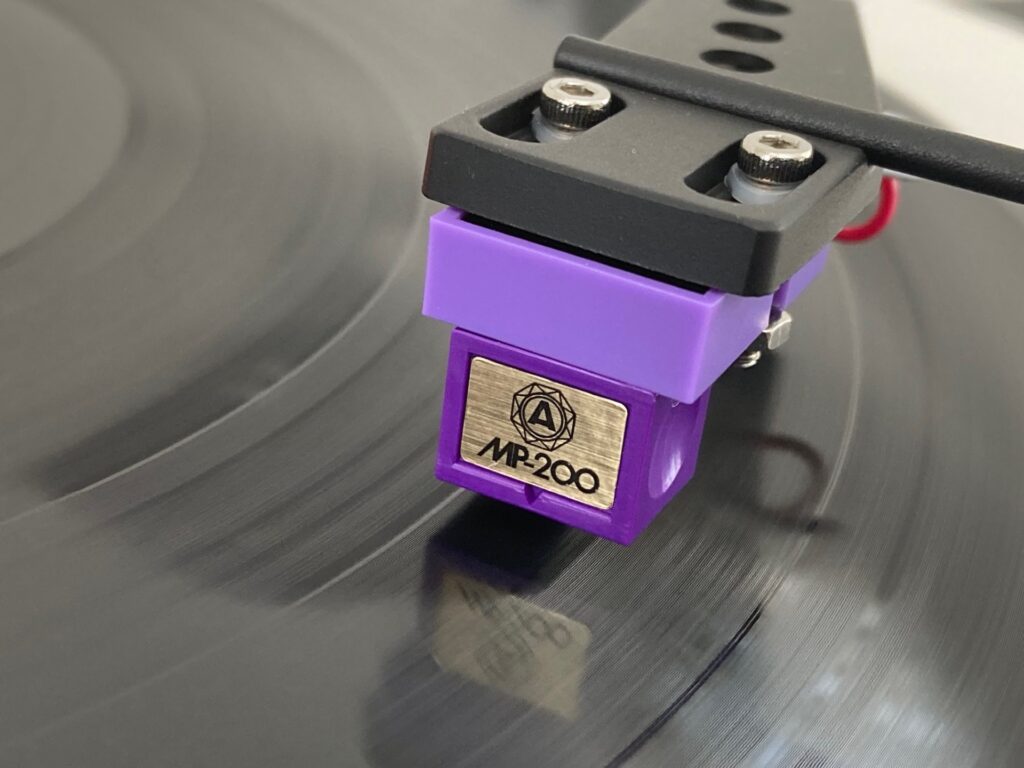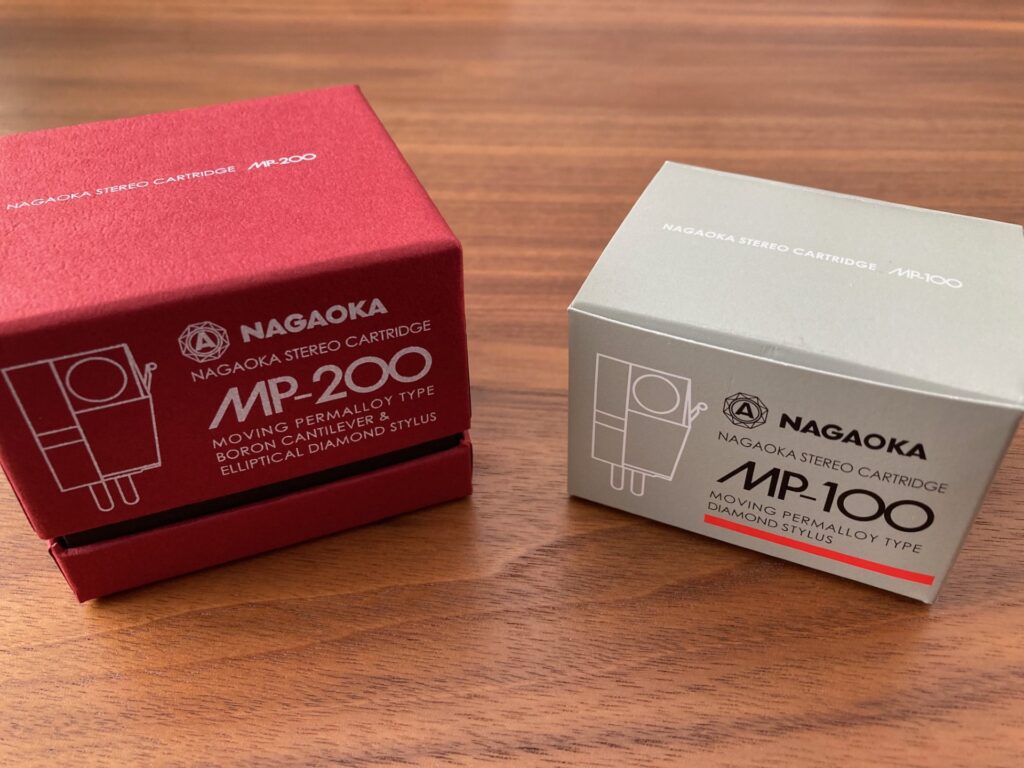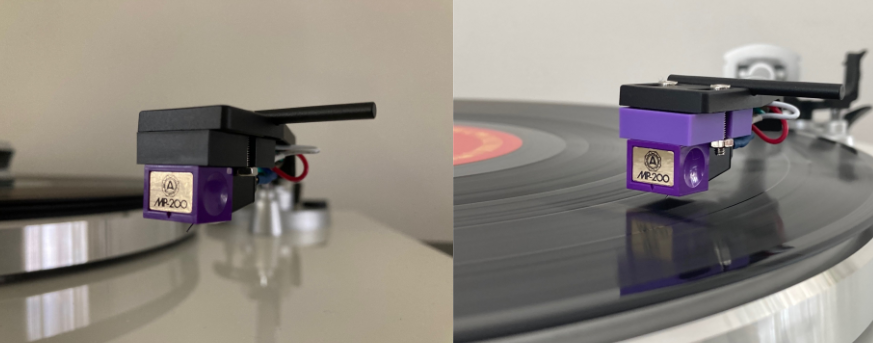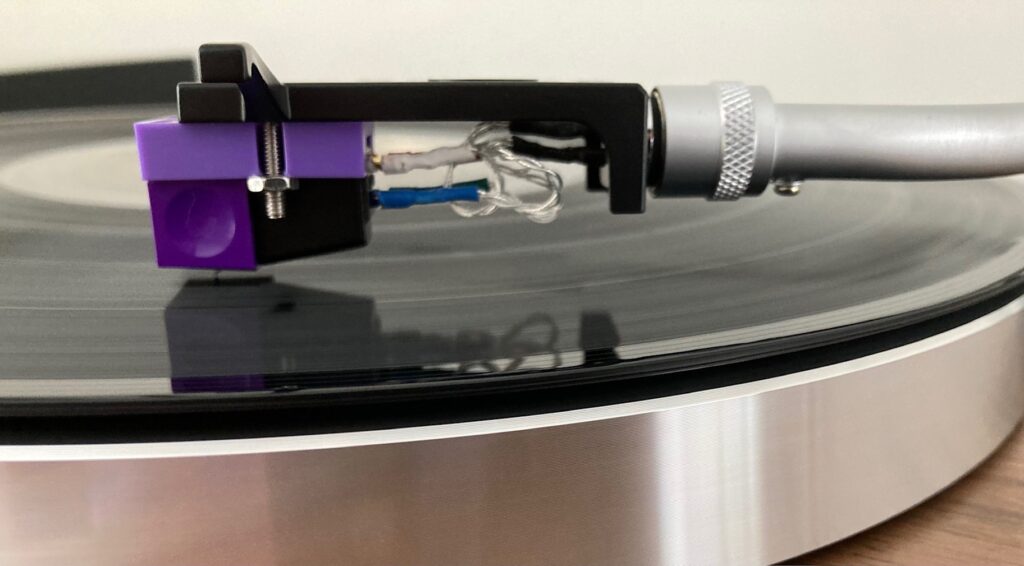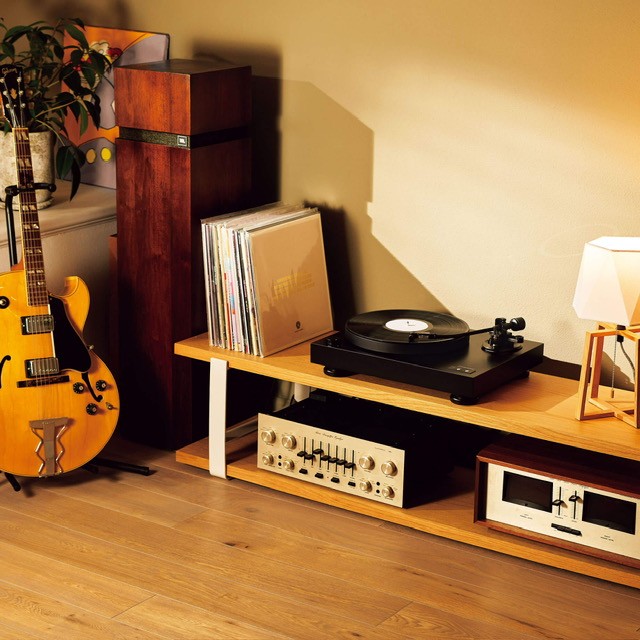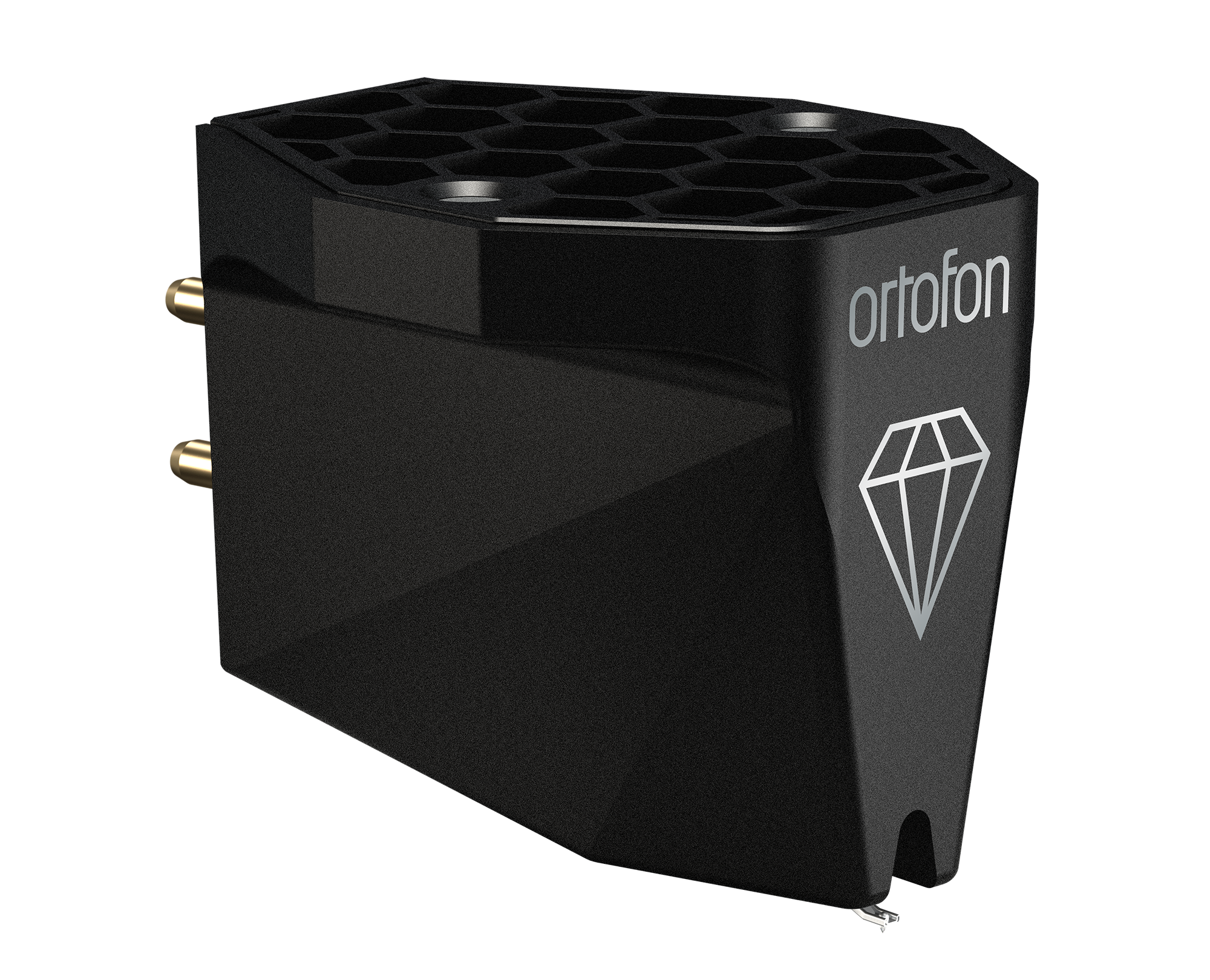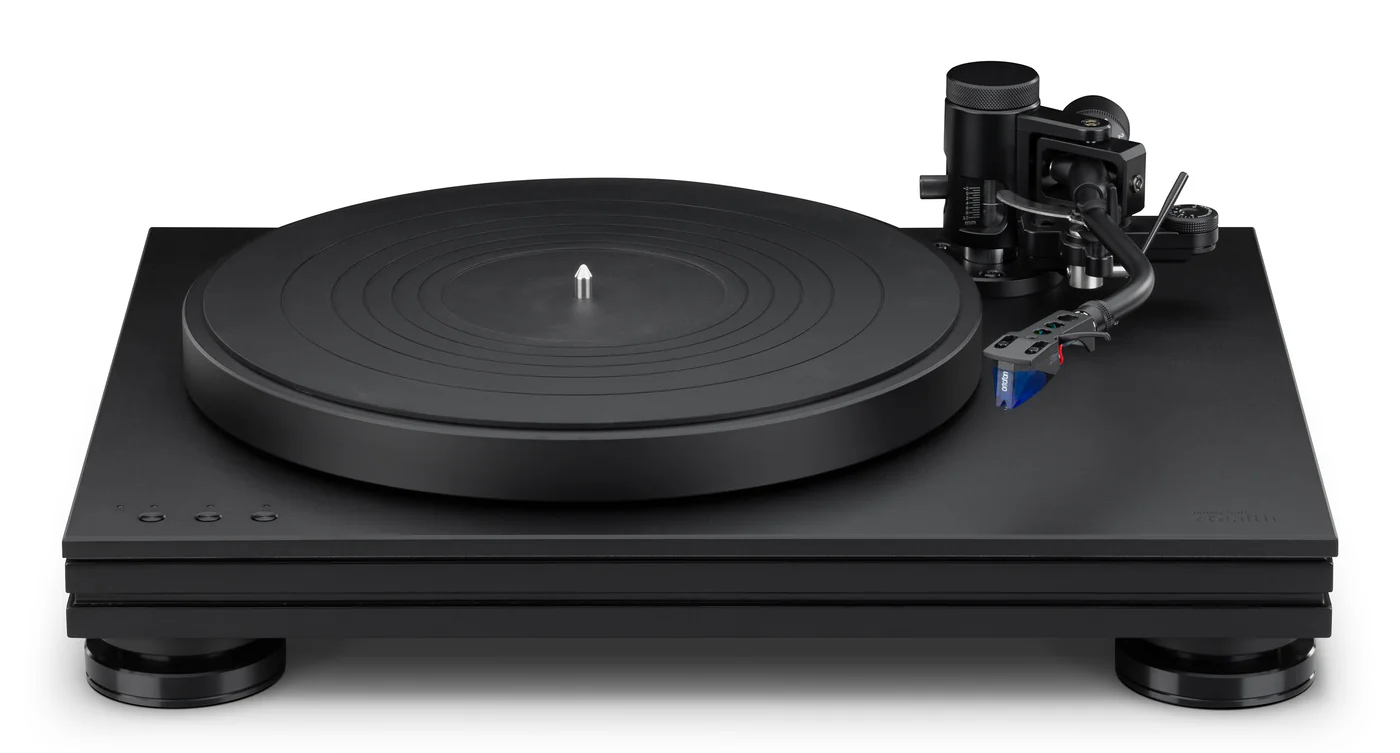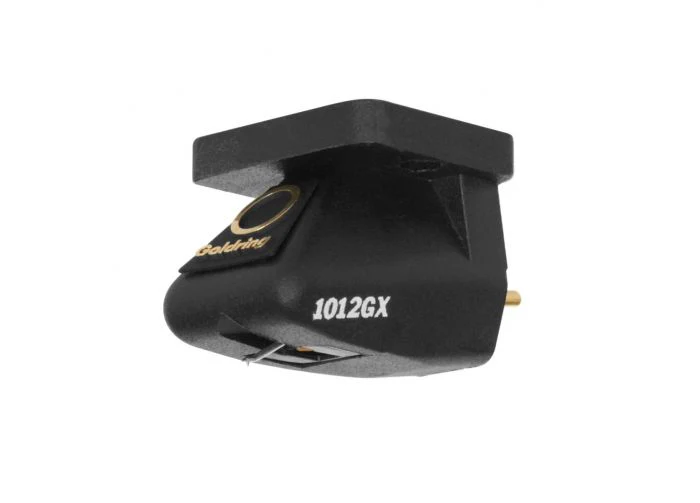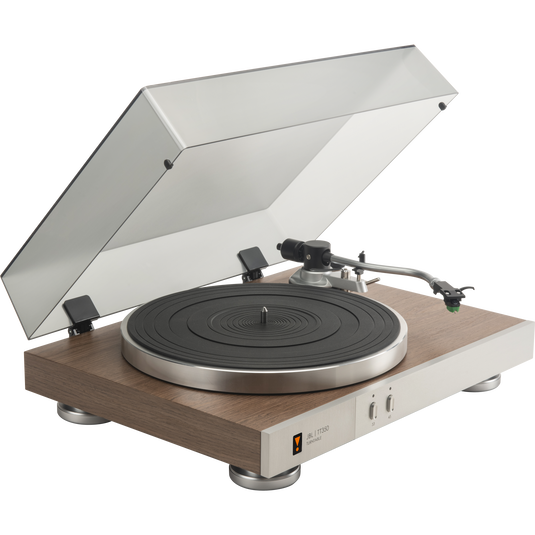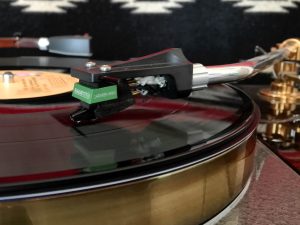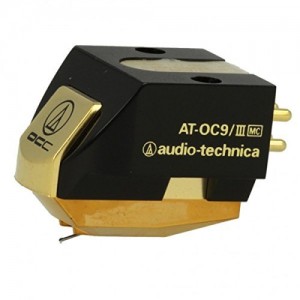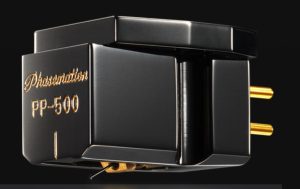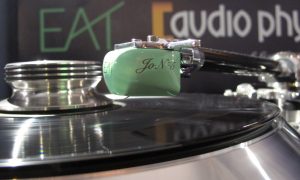I don't really know how to pronounce Nag-a-ok-a. Or is it Nag-a-woka? I wish I could find a video on YouTube or something from the actual company where someone says it correctly. Unfortunately, they don't really do much marketing or publicity, though I'm not sure it matters. Brochure copy can be especially unhelpful where the analog rubber meets the road. Phono cartridges are among the most idiosyncratic audio products out there, often as much a matter of taste as technical execution and synergy. It's like being an EL34 tube person versus KT88; you can't know for sure until you've actually tried them.
Nagaoka MP-series cartridges are certainly individualistic in that sense. I wouldn't say they have a particular sound so much as a philosophy. They're on the warm and forgiving side, but also rich, vibrant and dynamic. That's as true of the entry-level MP-100 ($149) with conical stylus, as it is of the subject of this review, the MP-200 ($509) with its improved internals, body structure, boron cantilever and nude elliptical diamond. The former is especially warm and loosey-goosey-bassy and not especially airy, even bordering on dull up top. The latter is generous-sounding and big-hearted but also speedy and highly articulate, with proportionately extended treble. (While this isn't a review of the MP-100 as well, I wanted to establish a baseline for myself using the most modest model in the range. Also, I'm quoting prices from the seller that says it's the only authorized Nagaoka dealer in the USA. Nonetheless, other reputable U.S. sellers somehow also carry the line, though it's unclear how they're supplied.)
The MP-200 and MP-100 arrived in similar packaging, except that the 200's plastic inner case is ensconced in a wristwatch-style box while the MP-100 is simple cardboard. Either way, there isn't much—or any—unnecessary adornment adding to the cost. Everything is purposeful, in a good way: you get what you pay for, and you don't pay for stuff you might already own or not need. No velvet bags. No fancy headshell wires. No stylus brush. No alignment gauge. Just a stylus guard and screws and a screwdriver and nuts. Since those screws don't have threaded holes in the cartridge body to go into, mounting is fiddly compared to cartridges with built-in threaded receivers, but no biggie. Mounting is otherwise uneventful, and the stylus unit pulls in and out exceptionally smoothly for safety during installation and eventual replacement.
And you'll want to replace it when the time comes, trust me, at least if you share my sensibilities. This is a gorgeous-sounding cartridge. Luminous, illuminating, lovely. If I didn't have nearly 40 years of experience messing with analog, I'd marvel at why. But my guess is, it's partly due to the boron cantilever that manages resonances far better than aluminum due to its stiffer nature. It's also partly because this isn't a moving magnet design, as many people assume, at least judging by what's online. This is actually a moving iron type, akin to Grado. I'll let you Google the difference, since I'd just be parroting information that's already out there, but in technical terms it doesn't matter. The Nagaoka MP-200 behaves just like a moving magnet for all practical purposes, including its high 4mv output, which is plenty of juice for any moving magnet phono preamp.
Sadly, that's all I can tell you about these cartridges. Nagaoka doesn't go into detail about the specific internal differences between the three distinct model ranges, aside from the stylus/cantilever designs, output and other basic specs. It's left to the buyer, or that person's dealer, to ascertain the less obvious reasons for the price differences beyond stylus shapes–and why the upper ranges are worth more than the lower ones. However, a simple and worthwhile experiment indicates that those differences are indeed meaningful.
Theoretically, all of the styli in the MP range are interchangeable. Nagaoka, however, purposely divides the range into tiers: entry-level MP-100/110, mid-level MP-150/200 and high-end MP-300/500. You're supposedly only allowed to swap styli within those groupings, i.e., you can substitute an MP-150 stylus on an MP-200 cartridge and vice versa but not on an MP-100. That's all I needed to hear to coax out my anti-authoritarian streak. After all, some people who already own a certain model, and for whom cartridge mounting is daunting, may wish to upgrade their stylus without the hassle of uninstalling the old cartridge body and installing a new one. Others may want a taste of how the higher models sound before committing to the purchase of an entire cartridge. So I transferred the stylus unit from the MP-200 to the 100–a move that required resetting the tracking force and also the alignment since the 200's cantilever is proportioned differently than the 100's, which makes it an inconvenient task.
The result: you can absolutely do it, and I wouldn't warn you against it since zero damage can be done to either your records or your phono preamp. But just as surely, the 100's body and internals don't match 200's capabilities. Certainly, the 200 stylus is a big upgrade, and you will 100% hear a difference unless you routinely stuff your ears with Silly Putty, but not a better one in every sense. Highs in particular sounded crispier, less refined, and not as well integrated. On the other hand, it did allow for a faster, more responsive sound with less veiling than the bonded, conical-tipped MP-100. So, the extra money you'll drop on a complete MP-200 as opposed to upgrading the stylus alone on a 100 or 110 is well spent. I'll leave it at this: if you're the cash-strapped owner of an MP-100 or MP-110 and hankering for an upgrade, go ahead, and enjoy your Franken-cartridge. But it just won't be the same as a full MP-200.
Back to the MP-200, which is a rare cartridge in that it offers speed, detail, a palpable sense of 3D space, chest-thumpingly deep bass, and above-average insight while still sounding rich, present, vibrant and most notably, never fatiguing. Only wood-bodied Grados deliver a similar set of virtues, going by my experience with the Opus3 (reviewed HERE) and Master3 (reviewed HERE). In fact, if that's what you're looking for, I'd audition both brands if possible. For some people, the fact that the Nagaoka's stylus is user replaceable, unlike the Grado, might be the clincher. Yet Grados in the same price range aren't necessarily more expensive to own over the long term, provided you don't mind sending the cartridge back to Grado for service when it's time for a new stylus. I'd be hard pressed to pick a favorite. Unless looks are a factor, in which case, let's be real, it's Grado all the way. As much as I appreciate the Nagaoka's old school charm and funky color schemes, um, yeah.
Anyway, the MP-200 loves jazz. It puts a good deal of air around delicate cymbal work, and in particular, recreates the ambience of small performance venues with close-your-eyes-and-you're-there reality. Big classical concert halls? Not quite so much, but enough that the effect is convincing, and the MP-200 does sort out massed instruments reasonably well, even managing a fair stab at fine textures at the same time. Switching back to smaller-scale music like folk, the cartridge is back in its element, with a degree of vocal realism that extends to acoustic guitars, banjos, and mandolins. Then switch to some Daft Punk and you're immersed in discoland with a wide, deep soundstage and tons of visceral impact. From Pat Metheny to Olivia Rodrigo, this cartridge is more than well-rounded enough for most folks.
Also, how can a cartridge with such a pleasing degree of midrange, warmth, and deep bass also have such sparkle? And with such agility and speed? And punch…serious bass punch. In some ways, this is a best-of-all-worlds performer, so much so that it's hard to believe the stylus is a tubby .04 x 0.7 nude elliptical–hardly the stuff that usually offers this kind of resolution. Tracking throughout my listening was uniformly excellent, with no sibilance either, and the cartridge was relatively unfussy about fine tuning, though I did prefer a very slightly tail-down VTA. People who believe the key to this kind of performance is an exotic stylus profile will likely be taken aback by what's possible when a cartridge is so well thought out from stem to stern.
Worried about stylus replacement costs given the born cantilever? Here it's about $300…much less than the price of replacing the entire cartridge versus many other competitors. Contrast that with, say, Audio-Technica's AT-VM95SH, where the cartridge costs $199 and the stylus is $179. It is, admittedly, hard to nail down what the "going price" is for Nagaoka styli because, again, there are several sources. For example, a reputable New York based retailer of records and turntables that has been around since 1999 sells them for around $200 as of this writing. If only Nagaoka themselves would clear this all up. Don't waste your time scouring their mostly Japanese-language website since there's not much there.
Pricing and distribution ambiguities aside, the MP-200 is otherwise a very easy-to-use proposition. It was equally enjoyable on a new Technics direct drive as it was on Yamaha's entry-level, lifestyle-oriented TT-N503. The Technics has a tonearm on the lower end of medium mass, while the Yamaha's feels more solidly medium mass, and not as precise or well engineered. Yet, I enjoyed this cartridge immensely on both turntables. Its considerable virtues shone unmistakably. I hate to say it, but the MP-200 sounded better (to me) on the less-good Yamaha. While the Technics wrung out effortless detail, tight bass and deeper soundstaging, it imposed a layer of vague aloofness by comparison…as if it kept shouting "Get serious!" at the MP-200. With the Yamaha, it was more generous, warm-hearted and cozy, without losing too much of the MP-200's speed and responsiveness. If you'd take an original 1970s or 80s, pre-Lingo Linn LP12 over a megabuck current model, as I would, then you know which way to go. There's no right answer.
Plus, even mounted on the Yamaha's decidedly budget-built tonearm, it was able to suss out individual instruments with well delineated composure–a result I'm not sure is due more to the MP-200's aw-shucks-it-ain't-nothin' posture or the Yamaha's frankly surprising musicality. The MP-200 is like a great speaker that's also high in efficiency and easy to drive. That's an inelegant comparison to be sure, but it's the best I can do in describing it. This cartridge really pulls its weight and can potentially work wonders with even a modest turntable, provided it's fundamentally good. (Sidebar: these previously unknown factories pumping out affordable turntables for the likes of Audio-Technica, Reloop, Music Hall, Denon, and now, Yamaha, have really gotten their acts together. More often than not, they don't sound like budget models at all, despite nothing about them suggesting they'd offer as much musical enjoyment and sound quality as they somehow do.)
Back to Nagaoka's MP-200: an outstanding phono cartridge that successfully blends high-ish resolution with classic analog warmth. Frankly, there really aren't many bad cartridges these days, mostly just degrees of good, and poor performance is usually the result of system mismatches and/or personal taste. At $509 or thereabouts, the MP-200 occupies a sweet spot of sorts between some very decent $200 moving magnet and moving iron models and their $600-$800 top-of-the-line counterparts. It's neither cheap nor exorbitantly priced, yet sounds expensive. And it's fun: like a high-IQ partygoer who loosens up at the drop of a hat, but manages to keep his intellect and manners firmly in check long after the wine starts flowing. If your attention is captured and held more by extreme frequency extension and stone-cold precision, it's probably not your cup of gyokuro. But if you're into an informative listen where the well-formed (but not ruthlessly revealed) individual elements of a recording coalesce into a fulfilling whole, give it a listen, because you might adore it. I do. Shame on me for ignoring Nagaoka for the past, oh, three decades or so. I've clearly been missing out.
Specifications
- Weight: 6.5 g
- Height: 18.6 mm (from top edge to stylus tip)
- Output voltage: 4mv
- Frequency response: 20Hz-23kHz
- Channel balance @ 1kHz: > 1.5dB
- Channel separation @ 1kHz: > 25dB
- Recommended loading: 47k ohms
- Dynamic compliance: 7.2 x 10-6 cm/dyne
- Static compliance: 20 x 10-6 cm/dyne
- Tracking force range: 1.5 - 2.0 g
MP-200 Phono Cartridge
Retail: $509
Nagaoka




